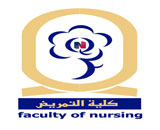CRITICAL CARE& EMERGENCY NURSING
2nd Undergraduate Year 2017/2018
University: SVU Faculty: Nursing
Course Specifications
Programmer(s) on which the course is given: Critical care and emergency
Major or minor element of programs:
Department offering the program: Department of
Critical care and emergency
Department offering the course: Department of
Critical care and emergency
Academic year / Level : 2nd/2nd semester
Date of specification approval: 2018-2019
A. Basic Information
Title: Critical care and emergency Code:
Credit Hours: Lecture: 3Hrs/w
Tutorial: Practical: 12 Hrs/w Total: 15Hrs/w
Courses Description:
This course provides the theoretical basis and related current clinical
approaches for the practice of critical care. Advanced assessment skills,
diagnostic reasoning and decision making are emphasized. Clinical
application of theoretical content will include pathophysiology,
pharmacology and treatment modalities. A collaborative care model
provides the framework for the management and evaluation of care. The
focus is on situational crisis and clients with multi-system failures who
requires sophisticated technologies.
B- Professional Information:
1-Overall aims of course:
At the end of this course, students will be able to provide comprehensive nursing care to correct core body systems alteration critically ill patients.
2- Intended learning outcomes (ILOs)
A- cknowledge and Understanding:
a1- Discuss the scope practice in critical care units
a2- Discuss basic principles of emergency care
a3- Describe categories of triage
a4- Identify critically ill patients and family’s needs and problems
b- Intellectual skills:
b1- Assess the needs of critically ill patients
b2– Identify the appropriate action for critical situations
b3- Prioritize actions according to the needs
c- Professional and practical skills:
c1- Monitor homodynamic, oxygenation, blood chemistry and base balance of critically ill patient.
c2- Develop technical skills necessary to function competently within critical care as a professional nurse
c3- Demonstrate technical skills in dealing with advanced technology in critical care setting.
c4- Demonstrate technical skills in managing patient with different types of trauma.
c5- Implement nursing process to provide high quality nursing care to critical care patient.
d- General and transferable skills:
d1- Communicate effectively with patients, their families and other Colleagues
d2- Develop confidence in clinical decision-making in the critical care setting
d3- Develop skills in dealing with information technology
3 -Contents:
Theoretical Critical &emergency Nursing
No.of Hours Lecture Tutorial/Practical Hospital Lecturer
Theoretical Critical &emergency Nursing
Topics:
Scope of critical care nursing practice
Assessment & management of critical ill or injured patients
Emergency medication
Acid base balance
Shock
Coronary Artery disease
Cardio thoracic surgery
Respiratory failure
Mechanical ventilation & weaning
pulmonary edema
Pulmonary embolism
Diabetic crisis
Hypertensive crisis
Stroke
Head injury
Spinal cord injury
Acute renal failure
Hepatic failure
MODS
SIRS
The neonatal intensive care unit
Pregnant woman and critical situation
Geriatric ICU
Practical Critical &emergency Nursing
Topics:
Oropharyngeal airway
Endotracheal Intubation
Laryngeal mask airway
Tracheostomy care
Endotracheal or Tracheostomy tube suctioning
Oxygen saturation monitoring by pulse oximetry
Inhalation therapy
Chest physiotherapy
Chest tube drainage system
Oxygen therapy
Pulmonary function test
Arterial blood gases.
Incentive spirometer
Total parenteral nutrition
Nasogastric tube insertion & care
Insertion of sengstaken-blakemore tube
12-lead ECG
Cardiac dysrhythmia
Exercise ECG
Cardiac catheterization
Percutaneous coronary intervention
Intra-aortic balloon pump
Cardiac pacemaker
Defibrillation and cardio version
Central Venous Pressure.
Infusion pump
Blood transfusion
Cardiopulmonary resuscitation
CRRT
4-Teaching and learning methods:
4a: Lectures
4b: Practical training / laboratory/ hospital
5- Student assessment methods:
5.1- Quiz (theoretical)
5.2 –Midterm (theoretical)
5.3- Mid-term (clinical)
5.4 Seminars (theoretical)
5.5 Logbook (clinical)
5.6- Final term (clinical exam)
5.7- Practical examination
Assessment Schedule:
– Quiz (theoretical) 5th week
– Midterm 10th Week
Weighting of assessment:
Final term examination 80 %
Oral examination 10%
Practical examination 50%
Semester work 60%
Total 200%
6- List of references
6.1 Course notes
6.2 Recommended books
Periodical. Web sites:
7- Facilities required for teaching and learning
Data show, skill lab.
Course director:
